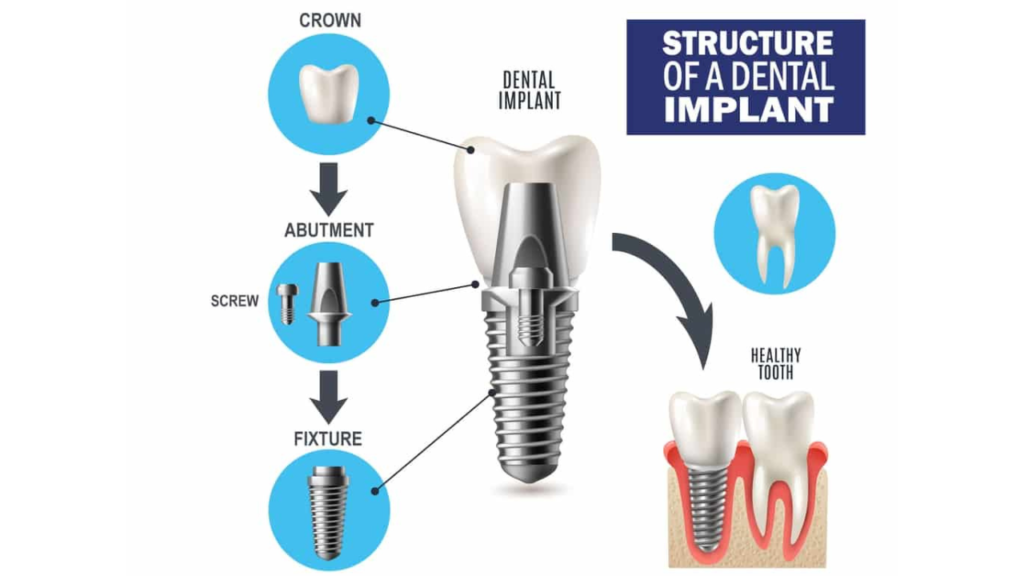
Dental implant surgery is an incredible solution that restores your smile’s beauty and function. In this guide, we’ll uncover the secrets behind dental implant surgery, equipping you with actionable advice every step of the way.
From understanding the benefits and eligibility of the surgery, you will get an idea about dental implants.
Maintain your newfound radiance with our postoperative care tips. Get ready to begin your journey that unlocks the magic of dental implant surgery, revitalizing your smile and boosting your confidence.
Here are the different processes of dental implant surgery
Understanding Dental Implant Surgery
Ensuring Comfort during Surgery
Step-by-Step Process of Implant Placement
Preparing for Successful Implants
Caring for Your Dental Implants
Remember to consult with a dentist to receive guidance throughout the entire process.
Keep reading to learn about dental implant surgery.
Understanding Dental Implant Surgery
Dental implant surgery is a procedure designed to replace missing teeth with artificial teeth. These implants serve a stable foundation for dental restorations such as crowns [1], bridges [2], or dentures [3]. from understanding the basics of dental implant surgery, you can make decisions about your oral health. Also, explore this transformative solution for restoring your smile.
Assessing Your Candidacy
Before undergoing dental implant surgery, it’s crucial to determine if you are a suitable candidate. This assessment involve evaluating your oral health, bone density, and medical condition. A dentist will examine your mouth, take X-rays, and perform more tests to assess the feasibility of the procedure for your specific case. Based on the assessment, they will provide recommendations. Discuss alternative treatment options if necessary.
Ensuring Comfort during Surgery
During dental implant surgery, ensuring your comfort is a top priority. Dentists use various methods to achieve this, including local anesthesia and sedation options such as oral sedatives or intravenous sedation to help you relax during the procedure. Your dentist will discuss the best anesthesia and sedation options for your needs and preferences.
Step-by-Step Process of Implant Placement
The dental implant surgery process involves several steps. First, an incision is made in the gum tissue to expose the underlying bone. Then, a small hole is carefully drilled into the bone to accommodate the implant. The implant, which resembles a screw, is then inserted into the drilled hole. Finally, the incision is closed with stitches. Your dentist will guide you through the detailed process, ensuring you have a complete understanding.
Preparing for Successful Implants
In some cases, more procedures may be necessary to prepare for successful dental implant placement. This could include bone grafting, which involves adding synthetic or natural bone material to areas with insufficient bone density. Another procedure called a sinus lift, may be performed if the sinus cavity encroaches on the implant site. These preparatory procedures help to create a solid foundation and ensure the long-term success of dental implants.
Healing and Integration
After the implant placement, a healing period is necessary. This will allow the implant to fuse with the surrounding bone, a process called osseointegration. This integration provides stability and support for the implant. During the healing period, it is crucial to follow your dentist’s postoperative instructions. which may include guidelines for oral hygiene, dietary restrictions, and avoiding behaviors that could interfere with healing. Regular check-ups will allow your dentist to check the healing process and ensure successful osseointegration.
Adding the Abutment and Crown
Once the implant has integrated with the bone and has become stable, the next phase involves attaching an abutment and crown to the implant. The abutment is a connector piece that sits on top of the implant and provides a base for the crown, which is the visible, tooth-shaped restoration. This step brings the implant restoration to completion. It will restore both the function and aesthetics of the missing tooth.
Caring for Your Dental Implants
Proper care and maintenance are essential to ensure the longevity of your dental implants. This includes practicing good oral hygiene by brushing and flossing, using non-abrasive toothpaste, and a soft-bristle toothbrush. Your dentist may recommend specific oral care products and show proper cleaning techniques for your implants. Additionally, attending regular check-ups allows your dentist to check the health of your implants and address any concerns.
What to do next?
By following these guidelines and the actionable advice provided, you can navigate the world of dental implant surgery with confidence. Dental implant surgery has the potential to transform your smile and quality of life. This will allow you to enjoy the benefits of a functional, natural-looking set of teeth once again.

